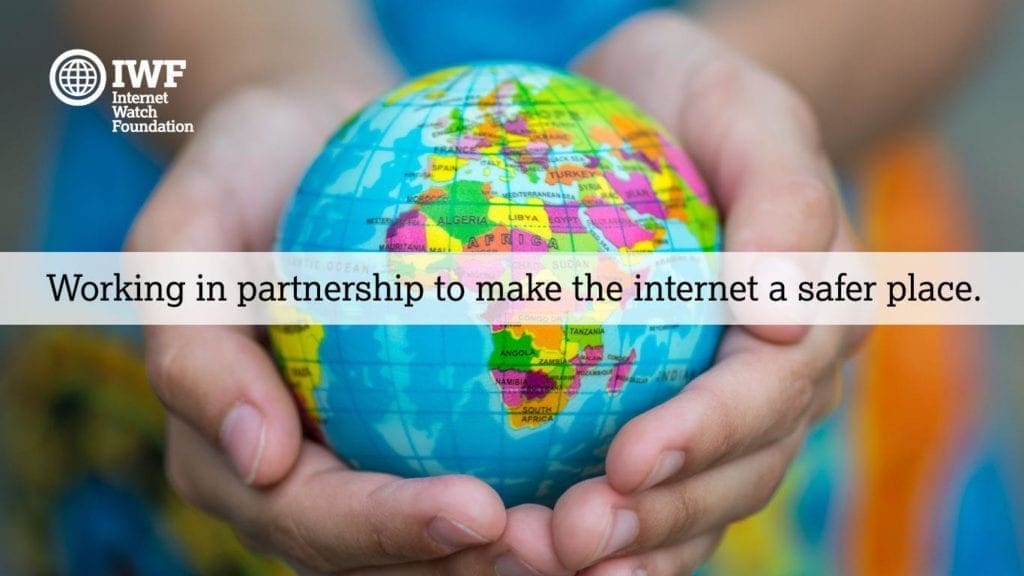A reporting solution for all

Zoé Colpaert, International Development Officer for the Internet Watch Foundation, shares her experience of setting up reporting portals for child sexual abuse material around the world and explains the necessary conditions to ensure these portals are both effective and sustainable.
Since 1996, the Internet Watch Foundation has been the UK hotline to report images and videos of child sexual abuse so that they can be removed from the internet. Other countries developed their own hotline, but many nations still don’t have a reporting mechanism to this day.
Everyone, wherever they live, should have access to mechanisms to report this terrible crime when they witness or experience it. That’s why at the IWF we have developed the Reporting Portal; a simple, tailored webpage directly linked to our analysts in Cambridge, UK. The idea is to offer, at very low cost, a sustainable solution to countries that might not have the needs or the resources to develop a full hotline.
Since 2013, we’ve launched 45 portals around the world, empowering and enabling more than two billion people to report, anonymously, images and videos of children abused sexually that they might see online.
Having a reporting mechanism is one of the capabilities under the WePROTECT Global Alliance Model National Response. The Guidance document encourages governments to take steps to remove child sexual abuse material from the internet, including through the development of technological solutions such as the portals.
Thanks to a grant from the End Violence Against Children fund, we will soon have launched 30 portals in low-income countries at no cost to the host nation. Such a grant enables the portal project to be accessible to all, and to safeguard children even in the poorest regions in the world.
Setting up reporting portals: a starter pack
We have launched Reporting Portals across the world in collaboration with partners ranging from government bodies, law enforcement units, NGOs, to the internet industry. The mechanism and digital infrastructure for the portals are built consistently but it’s important they are delivered and presented in a way to ensure they are accessible and sustainable.
Key aspects of a useful, sustainable reporting portal:
- Relevant and motivated partners with access to the public;
- User-friendly and accessible portal (translated in relevant languages, trusted by users, anonymous reports);
- Multi-sectoral support from stakeholders;
- Efficient promotion for a portal known and used by the public.
After identifying the most relevant partners based on their role in child protection and their access to citizens, we start developing the tailored portal. We then organise a roundtable, inviting all the relevant local and regional organisations and bodies in areas such as child protection, cybersecurity, education and children’s rights. This event acts as an introduction of the portal to key partners to get their support, advice and proposals to ensure its efficiency.
Getting the launch right is crucial to promote the portal and make sure people know where to report child sexual abuse imagery online. A large media coverage (online and off-line articles, TV and radio interviews) as well as a broad-ranging social media campaign allow for the message to be seen and heard, led by our portal partners as they are the best placed to know how to reach their fellow citizens. Our partnership with fellow Alliance member Facebook guarantees a large dissemination of the portal link thanks to ad credits usually offered to support our work.
International collaboration and best practice
For portals to be effective, a multi-sectoral approach is key. As well as inviting representatives from government, the police, ISPs and NGOs to the roundtable, we aim to involve them in the process.
For example, our awareness-learning programme in Zambia and Uganda shows the success of such wide-ranging collaboration. We worked with locally-based marketing agencies to develop a promotional strategy tailored to Zambians and Ugandans. Thanks to our government and NGO partners, as well as famous influencers like Crystal Newman in Uganda and Buumba Malambo in Zambia, our awareness-raising message on child sexual abuse has a strong national legitimacy and support amongst generations and communities. With the support of IWF members Facebook and telecom giant MTN, the message is widely spread, and we’re working together to expand this campaign to other portal countries in Africa and beyond.
Another example of the success of a multi-sectoral collaboration took place in Cote d’Ivoire. After launching the portal, MTN-CI reached out to us with a plan to promote the portal and open a dialogue on child online protection (COP) in the country. Along with government partners, UNICEF and law enforcement units, the launch of the national COP strategy ensured a wide-ranging knowledge of the portal and boosted our shared message of encouraging the public to swiftly report CSAM wherever they see it, which ultimately helps make children all over the world safer, both online and offline.
Zoé Colpaert is the International Development Officer for the Internet Watch Foundation, looking after the 45 Reporting Portals that are live around the world, and developing partnerships to set up new ones. She also works with like-minded organisations, government and law enforcement bodies, and firms to promote the use of portals and further international efforts towards protecting children online.
Follow IWF online
The views and opinions expressed in this article are those of the authors and do not necessarily reflect the official policy or position of WeProtect Global Alliance or any of its members.
Page last updated on 14th November 2024